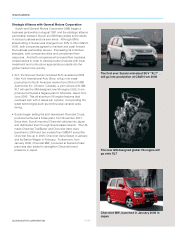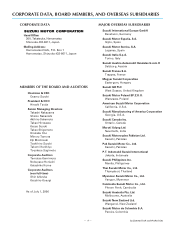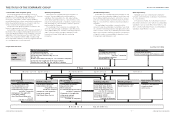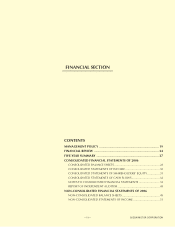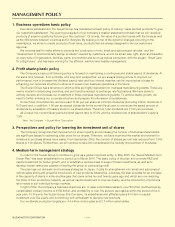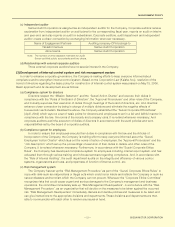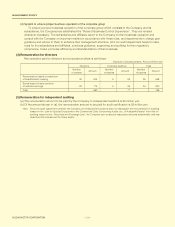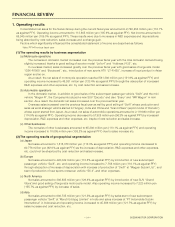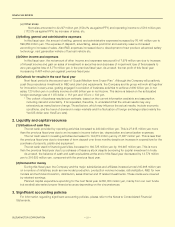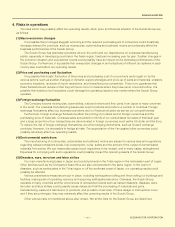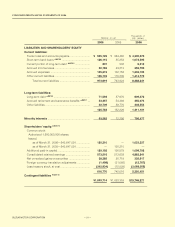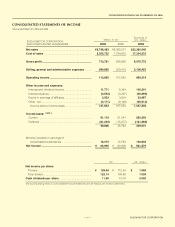Suzuki 2006 Annual Report Download - page 21
Download and view the complete annual report
Please find page 21 of the 2006 Suzuki annual report below. You can navigate through the pages in the report by either clicking on the pages listed below, or by using the keyword search tool below to find specific information within the annual report.
SUZUKI MOTOR CORPORATION
(2) Organization of the Company
(a) Directors/ board of directors
The Company has fortified its management foundations and achieved stable growth with twenty-nine directors.
Under rapid increase of overseas production and sales, the Company established the “Suzuki Medium-term 5-
year Plan (April, 2005 – March, 2010)” one year ago for continuing growth of Suzuki group. On the occasion of
enforcement of the Corporation Law (Kaisha-hou), in terms of enhancement of the corporate governance, the
Company started to undertake substantial organizational reform aiming at agility of management, speedup of
operation and clarification of responsibilities. Specifically, while the number of directors has been reduced by half
to fourteen, a new operating officer system (senior operating officers and operating officers) has been introduced
so that all directors, excluding the chairman and the president, play a central executive role and participate in
decision-making at board meetings through providing on-site information, by concurrently holding the office of
senior operating officers.
Furthermore, each director takes charge of plural divisions to supervise operations from viewpoint of
management in a cross-section manner, eliminating the negative effects of bureaucratic sectionalism. Besides the
above, the Company had stipulated the term of office of directors to be for one year in order to clarify their
management responsibilities and to address the change in the business environment flexibly.
In addition to the regular meetings of the board of directors held every month, directors hold a special board
meeting whenever necessary, and discussions including viewpoints of regulatory compliance and corporate
ethics are thoroughly conducted in those meetings for decision-making. Combined with participation of corporate
auditors at all times, the function of management supervision in meetings of the board of directors is working
effectively. And management councils are held whenever necessary to discuss the strategic decision on
execution of important management issues. Furthermore, directors mutually exchange information through weekly
meetings, etc.
Formerly resolution at meetings of the board of directors needed participation of more than one-half in number
of directors and a majority of votes of those directors. The Company has introduced the resolution system in the
form of a written consent for the purpose of participation by all directors in substance as well as effective and
timely decision-making.
(b) Auditors/board of corporate auditors and internal auditing
The Company has adopted a corporate auditor system, and their board consists of five members including
three persons of external corporate auditors in order to enhance the audit function. And the Company has audit
department which audit on our domestic and overseas subsidiaries and affiliates, in addition to the internal audit
group. Thus, along with auditing by independent auditor, audits are executed in three different ways, from the
standpoint of compliance, internal control and management efficiency respectively.
As to corporate auditors, they execute audits on proper management of the Company, in accordance with the
rules of the board of corporate auditors and audit policies of the corresponding fiscal year, by holding meetings of
the board of corporate auditors, participating in meetings of the board of directors, perusing approval documents
and various minutes, and receiving reports and explanation from directors on execution of business, etc.
As to internal auditing, the audit department checks the integrity and efficiency of the Company’s internal
control system periodically, and results of the checks are reported to management together with suggestions
regarding improvement and correction of problems. As to audit on our subsidiaries and affiliates, the audit
department helps to make rules for enhancement of their management structures, conducts guidance, supporting
and auditing for regulatory compliance. It also promotes efficiency and standardization of their business.
Corporate auditors adjust audit plans and auditing themes of the audit department, attend its audit and receive
reports and explanation on all its audits whenever necessary. Corporate auditors also execute internal auditing
and auditing on subsidiaries as corporate auditors’ auditing in cooperation with the audit department.
MANAGEMENT POLICY
21





